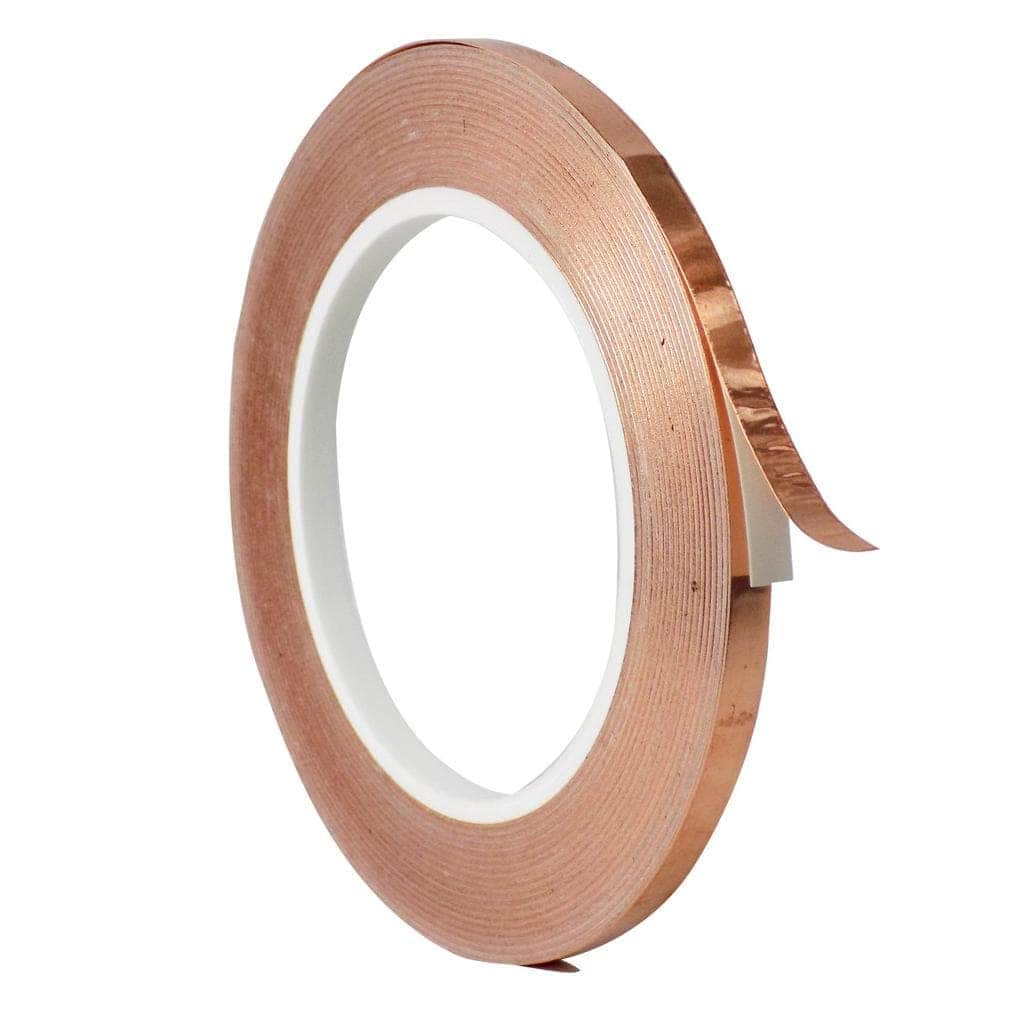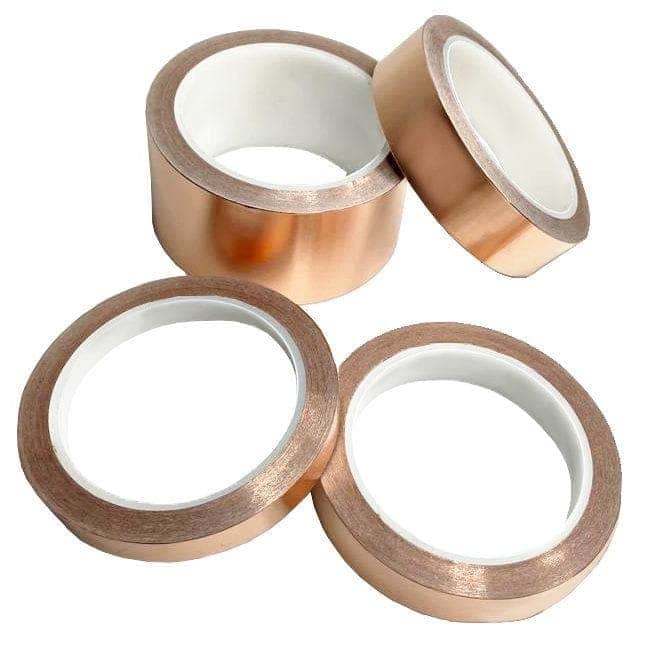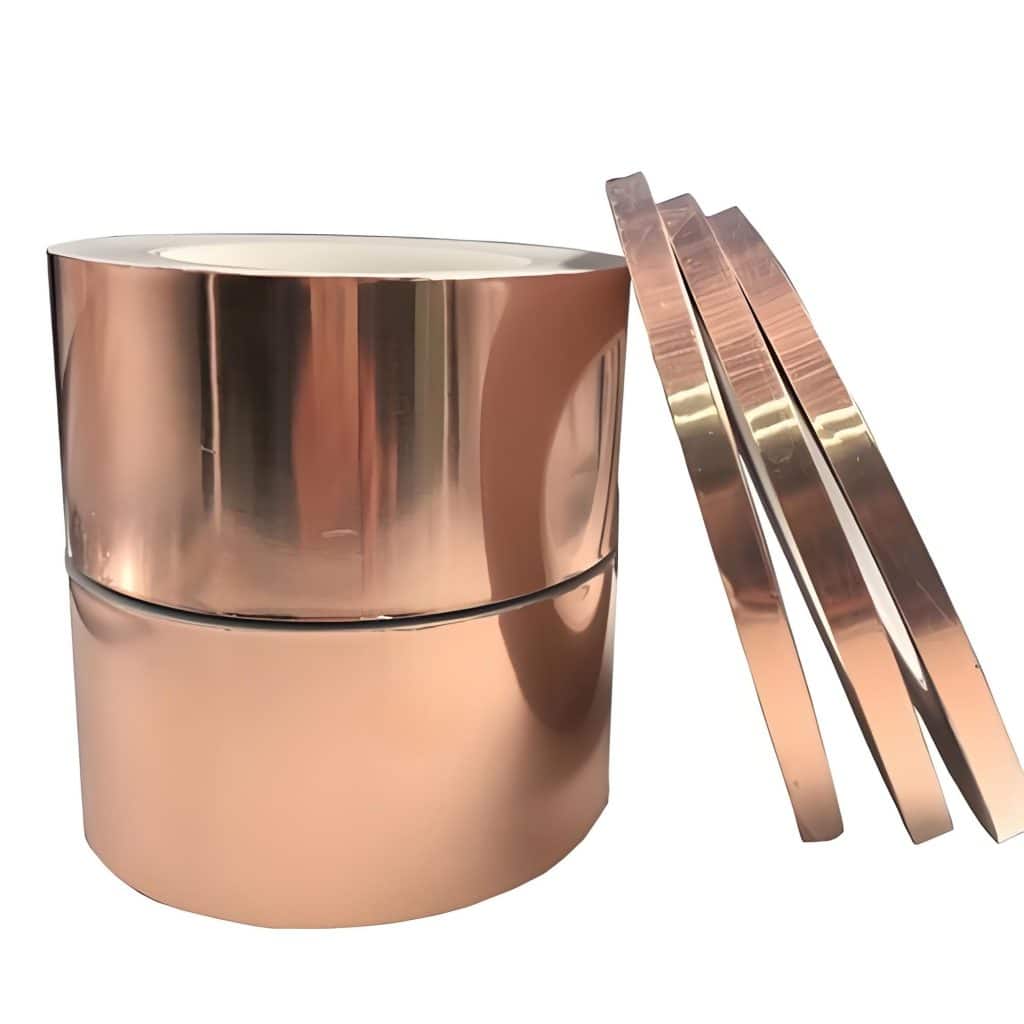The Materials Used in Copper Foil Tape
Copper foil tape is a versatile material widely used in various industries due to its unique properties and effectiveness in applications requiring electrical conductivity, shielding, and adhesion. The construction of copper foil tape involves several key materials, each contributing to its overall functionality and performance.
Here’s an in-depth look at the materials used in copper foil tape, including the copper foil itself, adhesive backing, optional coatings, and their respective properties.
Table of Contents
1. Copper Foil
Material Composition:
- Copper: The primary component of copper foil tape is copper, a metal renowned for its excellent electrical and thermal conductivity. Copper is chosen for its superior ability to conduct electricity and heat, making it an ideal choice for various applications that require effective electrical connections or heat dissipation.
- Thickness: Copper foil used in tape is typically very thin, with thicknesses ranging from 1 mil (0.001 inches) to several mils. The specific thickness is selected based on the application requirements, with thinner foils being more flexible and thicker foils offering increased durability and shielding effectiveness.
- Finish: Copper foil can come in various finishes, including shiny, matte, or brushed. The finish affects the tape’s appearance and can influence its performance. For example, a shiny finish might provide better reflectivity for certain shielding applications, while a matte finish may offer a more subdued aesthetic.

Properties and Benefits:
- Electrical Conductivity: Copper is an excellent conductor of electricity, which is crucial for applications involving grounding, shielding, and circuit repair. The high conductivity of copper ensures that electrical signals and currents are transmitted efficiently, minimizing losses and interference.
- Flexibility: The thin nature of copper foil makes it highly flexible and capable of conforming to a wide range of surfaces, including curved or irregular shapes. This flexibility allows copper foil tape to be used in tight spaces and intricate designs, such as in electronics and crafting projects.
- Thermal Conductivity: In addition to its electrical conductivity, copper also has excellent thermal conductivity. This property makes copper foil tape suitable for applications involving heat dissipation, such as in thermal management systems or heat sinks.
- Corrosion Resistance: Copper naturally oxidizes over time, which can lead to tarnishing and degradation. To address this, copper foil is often treated or coated to improve its resistance to corrosion and maintain its performance and appearance over time.
2. Adhesive Backing
Material Composition:
- Adhesive Types: The adhesive used on copper foil tape varies depending on the application and required performance characteristics. Common types of adhesives include acrylic, rubber-based, and silicone.
- Acrylic Adhesive: Known for its strong adhesion, durability, and resistance to aging and UV light. Acrylic adhesives provide a permanent bond and are suitable for a wide range of surfaces and applications.
- Rubber-Based Adhesive: Offers excellent initial tack and adhesion to various surfaces. Rubber-based adhesives are often used for applications requiring a quick and strong bond, though they may not have the same level of temperature resistance as acrylic or silicone adhesives.
- Silicone Adhesive: Provides high-temperature resistance and is often used in applications involving extreme heat or exposure to chemicals. Silicone adhesives maintain their adhesion properties in high-temperature environments and are less affected by temperature fluctuations.
- Backing Material: Some copper foil tapes have a backing material, such as paper or plastic, which protects the adhesive until the tape is applied. The backing material is removed before application and ensures that the adhesive remains clean and effective until use.

Properties and Benefits:
- Adhesion Strength: The adhesive backing is designed to provide strong, reliable adhesion to various surfaces, including metals, plastics, ceramics, and glass. This ensures that the tape stays securely in place and performs its intended function.
- Temperature Resistance: Depending on the adhesive type, copper foil tape can withstand a range of temperatures. For example, acrylic adhesives typically perform well at moderate temperatures, while silicone adhesives are better suited for high-temperature environments.
- Ease of Application: The pressure-sensitive nature of most adhesives allows for easy application and repositioning. This feature is particularly useful for tasks that require precise placement or adjustments before the adhesive bonds permanently.
3. Anti-Tarnish Coating (Optional)
Material Composition:
- Coating Materials: Some copper foil tapes are coated with anti-tarnish layers to prevent oxidation and tarnishing. Common coatings include organic compounds, polymers, or other protective layers that inhibit the formation of copper oxide.
- Purpose: The primary purpose of an anti-tarnish coating is to maintain the appearance and performance of the copper foil over time. This is particularly important in applications where visual aesthetics and long-term reliability are crucial.
Properties and Benefits:
- Enhanced Durability: The anti-tarnish coating helps protect the copper foil from environmental factors that can cause degradation, such as humidity, air exposure, and chemical interactions. This protection extends the lifespan of the tape and ensures consistent performance.
- Corrosion Resistance: By preventing oxidation, the coating maintains the copper’s conductive properties and prevents the tape from losing its effectiveness due to corrosion.

4. Additional Considerations
Environmental Impact:
- Recyclability: Copper is a recyclable material, and many copper foil tapes can be recycled after use, reducing their environmental impact. The recyclability of the tape depends on the adhesive and coating materials, which may affect the overall recycling process.
Compliance and Standards:
- Industry Standards: Copper foil tape must comply with various industry standards and regulations, such as RoHS (Restriction of Hazardous Substances) for electronics and REACH (Registration, Evaluation, Authorization, and Restriction of Chemicals) for chemical safety. Compliance ensures that the tape meets safety and performance requirements for its intended applications.
Conclusion
The copper foil provides excellent electrical and thermal conductivity, while the adhesive backing ensures strong adhesion and ease of application. Optional coatings enhance the tape’s durability and resistance to corrosion. These materials work together to make copper foil tape a versatile and effective solution for a wide range of applications, from electronics and industrial uses to crafting and home improvement projects. Understanding the materials and their properties helps users select the appropriate copper foil tape for their specific needs, ensuring optimal performance and reliability . Handa Shielding provides excellent customized copper foil tape,if you need,please contact us right now.